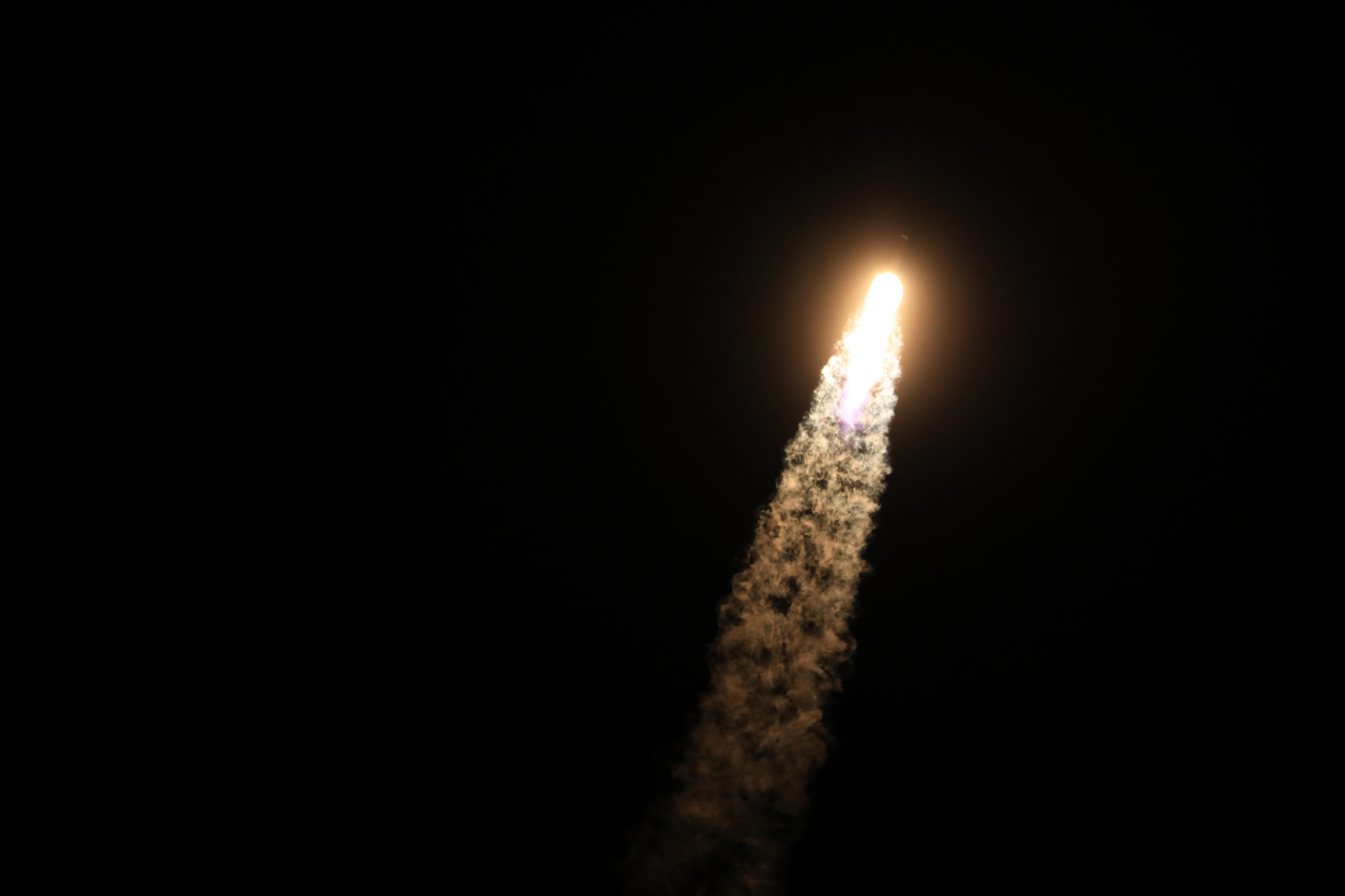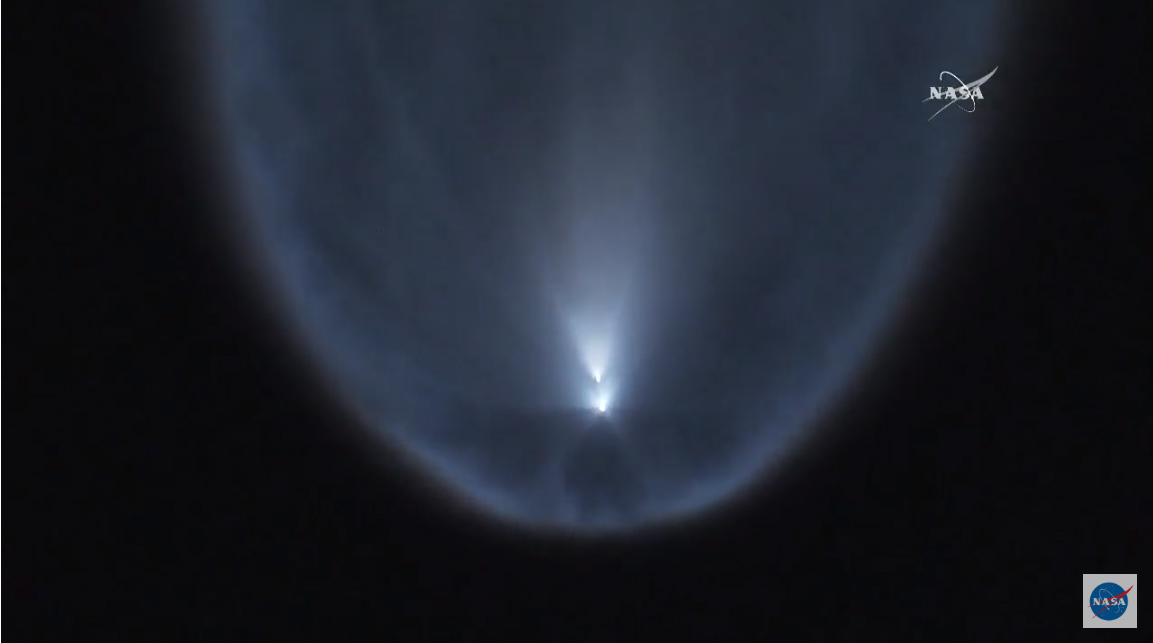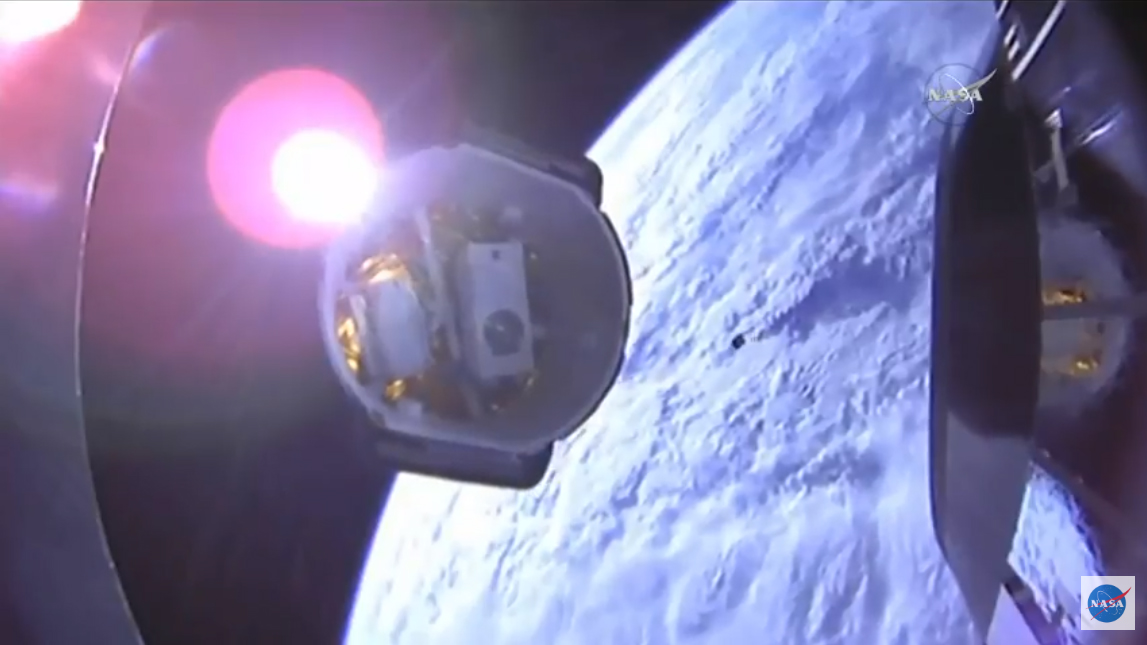SpaceX Launches Used Dragon Cargo Ship to Space Station, Flexing Reusability Muscles
SpaceX sent a cargo spacecraft skyward early Friday (June 29) during a dazzling predawn liftoff that showcased the company's considerable reusability chops.
A two-stage SpaceX Falcon 9 rocket lit up the early-morning Florida sky as it launched the company's robotic Dragon capsule toward the International Space Station (ISS) on a delivery mission for NASA at 5:42 a.m. EDT (0942 GMT) from Cape Canaveral Air Force Station. The Dragon will arrive at the space station early Monday (July 2).
"We had a beautiful morning," Kirk Shireman, NASA's space station program manager, said in a post-launch briefing. "I was going to say breathtaking, but maybe 'awakening' might be a better word." [In Photos: SpaceX's Dazzling Dragon Launch to Space Station]
"I like to refer to it as the space jellyfish that's coming down after us," added Jessica Jensen, SpaceX's director of Dragon mission management. "These are the best."
The liftoff was the second for both the Dragon and the Falcon 9's first stage; the capsule previously visited the ISS in July 2016, and the booster helped launch NASA's Transiting Exoplanet Survey Satellite this past April. The 10-week turnaround was the shortest ever for a landed and relaunched SpaceX first stage, company representatives said.
SpaceX did not attempt today to land the booster for a second time. The booster is a "Block 4" Falcon 9 variant, which SpaceX is phasing out in favor of the recently debuted "Block 5." So, the company surrendered the first stage to the ocean. In fact, today marked the last-ever flight of a Block 4 Falcon 9, SpaceX representatives said.

To date, SpaceX has pulled off 25 first-stage touchdowns and reflown 14 such landed boosters. These activities are in service of the company's ambitious long-term vision.
Get the Space.com Newsletter
Breaking space news, the latest updates on rocket launches, skywatching events and more!
"From the get-go, SpaceX has set out to make spaceflight more like commercial air travel — we want to make it safe [and] affordable and [to do it] utilizing vehicles that can be reflown repeatedly," Jensen said in a prelaunch news conference yesterday (June 28).
"This the key to the future of a civilization where we have thousands to millions of people exploring the stars and living out on other planets," she added.
SpaceX also pulled off a reuse double play in December 2017, sending a used Dragon toward the ISS atop a Falcon 9 with a flight-proven first stage.
Lots of science on board

If all goes according to plan, the Dragon will arrive at the orbiting lab early Monday morning. ISS crewmembers will then begin off-loading the 5,900 lbs. (2,700 kilograms) of supplies packed aboard the capsule.
More than half of that stuff — 3,874 lbs. (1,757 kg), to be exact — is scientific gear, NASA officials said during yesterday's press conference.
One prominent piece of that research equipment is NASA's Ecosystem Spaceborne Thermal Radiometer Experiment on Space Station (ECOSTRESS) instrument, which will measure the temperature of vegetation around Earth with a precision of just a few tenths of a degree. ECOSTRESS' observations will help scientists understand how plants respond to heat stress and lack of water, NASA officials said. The sharp-eyed instrument will also help keep tabs on urban heat waves, volcanic activity and wildfires.
"We'll be able to see a bonfire on a beach," ECOSTRESS principal investigator Simon Hook, of NASA's Jet Propulsion Laboratory in Pasadena, California, said in a statement.
Also aboard Dragon is an experiment designed to determine if microgravity-cultured cells can serve as a model system to assess the effectiveness of certain cancer-treatment drugs. Another investigation aims to engineer algae for growth in microgravity. [How SpaceX's Dragon Space Capsule Works (Infographic)]
"The cultivation of algae offers potential as a system for recycling carbon dioxide, which is one of the things we need in our life-support systems," David Brady, NASA's assistant program scientist for ISS, said during yesterday's news conference. "And it also potentially could provide food for crewmembers on long space voyages."
Then there's the Crew Interactive Mobile Companion (CIMON), a joint effort of the German space agency (known by its German acronym, DLR) and Netherlands-based aerospace company Airbus. The nearly spherical, 11-lb. (5 kg) CIMON is an astronaut assistant endowed with artificial intelligence (IBM's Watson system) that can see, hear and talk. Its main mission aboard the ISS involves demonstrating "cooperation between humans and intelligent machines in the form of a technology experiment," DLR officials wrote in a description of the project.
A one-month stay
Dragon will stay attached to the ISS for a month, eventually returning to Earth for an ocean splashdown (and subsequent recovery by ship) on Aug. 2. Dragon — the only currently operational ISS cargo craft designed to survive the fiery voyage through Earth's atmosphere — will haul 2,860 lbs. (1,297 kg) of science gear during its return trip, Brady said. [See the Evolution of SpaceX's Rockets in Pictures]
Today's launch kicked off SpaceX's 15th ISS resupply mission, known as CRS-15, under its multibillion-dollar deal with NASA. ("CRS" stands for "commercial resupply services.")
Northrop Grumman Innovation Systems holds a similar deal with NASA; the company makes its cargo runs using robotic Cygnus spacecraft and United Launch Alliance Atlas V rockets. (NASA signed that resupply contract with the Virginia-based company Orbital ATK, which Northrop Grumman recently acquired.)

SpaceX plans to fly used first-generation Dragon capsules through the CRS-20 mission, Jensen said. After that, the company will switch to its "Dragon 2" spacecraft, the variant SpaceX is developing to make crewed flights to and from the ISS under a different NASA contract. (Aerospace giant Boeing also holds a commercial-crew contract with the space agency.)
But Dragon 2's resupply flights will still be robotic, Jensen said.
"What we'll basically be doing is changing out seats and consoles for cargo accommodation," she said.
Before today's launch, Shireman took a moment to reflect on Thursday's fatal shooting in the offices of the newspaper "Capital Gazette" in Annapolis, Maryland. Five people were killed and two others injured in the shooting, according to the New York Times. Police have a suspect in custody.
"We're saddened by the events of yesterday and I wanted to take just a minute to thank the members of the press, of the nation's journalism committee that works so diligently to cover everything, and including this nation's space program," Shireman said. "So, thank you for the hard work and the important work that you do."
Editor's note: This story has been updated to include new commetns from NASA and SpaceX from a post-launch press conference. SpaceX's Dragon cargo ship is scheduled to arrive at the International Space Station Monday, July2, at 7 a.m. EDT (1100 GMT). You can watch its arrival live here, courtesy of NASA TV, beginning at 5:30 a.m. EDT (0930 GMT).
Follow Mike Wall on Twitter @michaeldwall and Google+. Follow us @Spacedotcom, Facebook or Google+. Originally published on Space.com.
Join our Space Forums to keep talking space on the latest missions, night sky and more! And if you have a news tip, correction or comment, let us know at: community@space.com.

Michael Wall is a Senior Space Writer with Space.com and joined the team in 2010. He primarily covers exoplanets, spaceflight and military space, but has been known to dabble in the space art beat. His book about the search for alien life, "Out There," was published on Nov. 13, 2018. Before becoming a science writer, Michael worked as a herpetologist and wildlife biologist. He has a Ph.D. in evolutionary biology from the University of Sydney, Australia, a bachelor's degree from the University of Arizona, and a graduate certificate in science writing from the University of California, Santa Cruz. To find out what his latest project is, you can follow Michael on Twitter.









